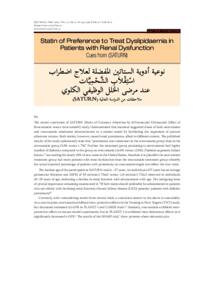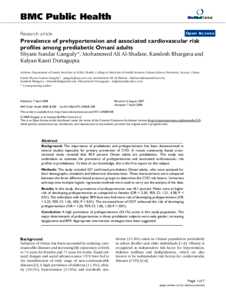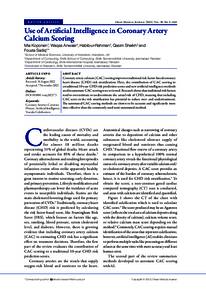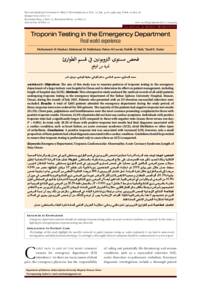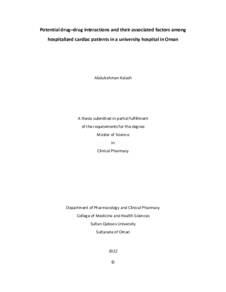Document
Statin of preference to treat dyslipidaemia in patients with renal dysfunction : cues from (SATURN).
Contributors
Al-Dughaishiyah, Tamima., Author
Al-Rasadi, Khalid., Author
Bayoumi, Riad., Author
Banerjee, Yajnavalka., Author
Other titles
نوعية أدوية الستاتين المفضلة لعلاج اضطراب اسْتِقْلاَبِ الشَّحْمِيَّات عند مرضى الخلل الوظيفي الكلوي: ملاحظات من الدراسة العالمية (SATURN
Publisher
College of Medicine, Sultan Qaboos University.
Gregorian
2012-05
Language
English
Subject
English abstract
The recent conclusion of SATURN (Study of Coronary Atheroma by InTravascular Ultrasound: Effect of
Rosuvastatin versus AtorvastatiN) study,1 demonstrated that maximal suggested doses of both atorvastatin
and rosuvastatin ameliorate atherosclerosis to a similar extent by facilitating the regression of percent
atheroma volume. Both statins, however, caused renal proteinurea, albeit to different extents. The published
results of the study ephemerally state that "proteinuria was commoner in the rosuvastatin group than in the
atrovastatin group (3.8% versus 1.7%)". Further, the treatment group pertaining to atrorvastatin had higher
number of diabetics compared to the group on rosuvastatin (16.8% versus 13.8%). Diabetes augments kidney
failure,2,3 accounting for nearly 44% of new cases in the United States, therefore it is plausible the atorvastatin
treatment group had more patients with renal dysfunction than the rosuvastatin treatment group whereby
the actual reported percentage of patients with proteinuria on rosuvastatin might not reflect the true value.
Member of
Resource URL
Category
Journal articles

